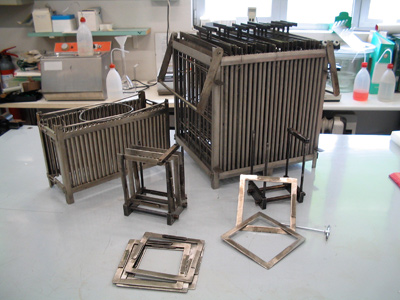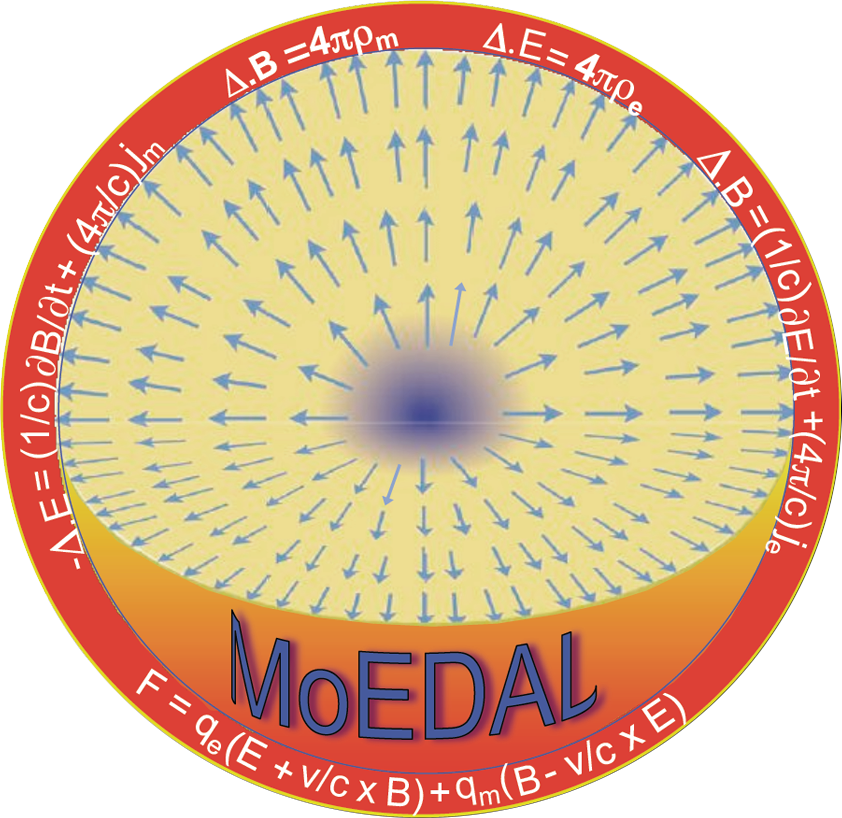Two procedures, based on experience with the SLIM experiment [88], have been defined for the chemical etching of CR 39 detectors: the strong and soft etching conditions:
- The strong etching conditions for CR 39 are 8N KOH+1.5% ethyl alcohol at 75C for 30 h. It is applied to quickly remove a large amount of material allowing a better surface quality and larger post-etched cones making them easier to detect during visual scanning;
- The soft etching conditions for CR 39 are 6N NaOH+1% ethyl alcohol at 70C for 40 h. It allows etching to proceed in several etching steps in order to study the formation of the post-etched cones giving reliable measurements of the deposited energy and the direction of the incident particle. The addition of ethyl alcohol in the etchant increases the detection threshold, but it improves the etched surface quality and reduces the number of surface defects and background tracks.

The threshold for CR39 is Z/β ~ 14 in strong etching corresponding to a minimum RELmin ∼ 200 MeV g-1 cm2. In soft etching conditions the threshold is at Z/β∼ 7 which corresponds to RELmin 50 MeV g−1 cm2. In the case where CR 39 is polymerized with 0.1% DOP additive the thresholds are raised to Z/β ∼ 21 (RELmin ∼ 460 MeV g−1 cm2) for strong etching and to Z/β ∼ 13 (RELmin ∼ 170 MeV g−1 cm2) for soft etching. The etching conditions for Makrofol are 6N KOH + 20% ethyl alcohol at 50C for 10 h, and the corresponding threshold is Z/β∼50, RELmin ∼ 2.5 GeV g−1 cm2. The chemical etching is performed in the Nuclear Track Etch Detector Laboratory of INFN, in Bologna. Stainless steel tanks are used: two large tanks of 40 x 55 x 40 cm3 dimensions, a medium tank 40 x 4 x 26 cm3 and two small tanks 22 x 34 x 16.5 cm3 having different types of stirring and heating systems and of temperature control. The stability of the etching temperature throughout the solution is maintained to within 0.01%. The detector foils are placed in the stainless steel detector holders in the etching solution inside the tanks. There are three other tanks which are used for the presoaking and washing of the detectors.
